Looking around your classroom and wondering if you should be adding plants to liven things up? The best plants for the classroom can end up teaching students responsibility, being worked into your science lessons, and of course, just add a little greenery on dull winter days. But what exactly are the best plants, and are there plants you should avoid if you’re an elementary teacher?
The teachers who create all the resources you find on Teach Starter put their heads together to come up with the very best classroom plants and a few you’ll want to skip when you’re decorating, plus some tips to make the most out of having that fabulous flora!
Are Plants Good for the Classroom?
We can give this question a resounding yes! Research into workplace environments has shown that there are measurable associations between the presence of indoor plants and:
- Increased productivity
- Reduced stress and anxiety
- Reduced time off with sickness
- Improved air quality
Imagine — healthier students and less time trying to chase down all that absentee work! Check out Marilyn’s classroom plant setup based in New York:
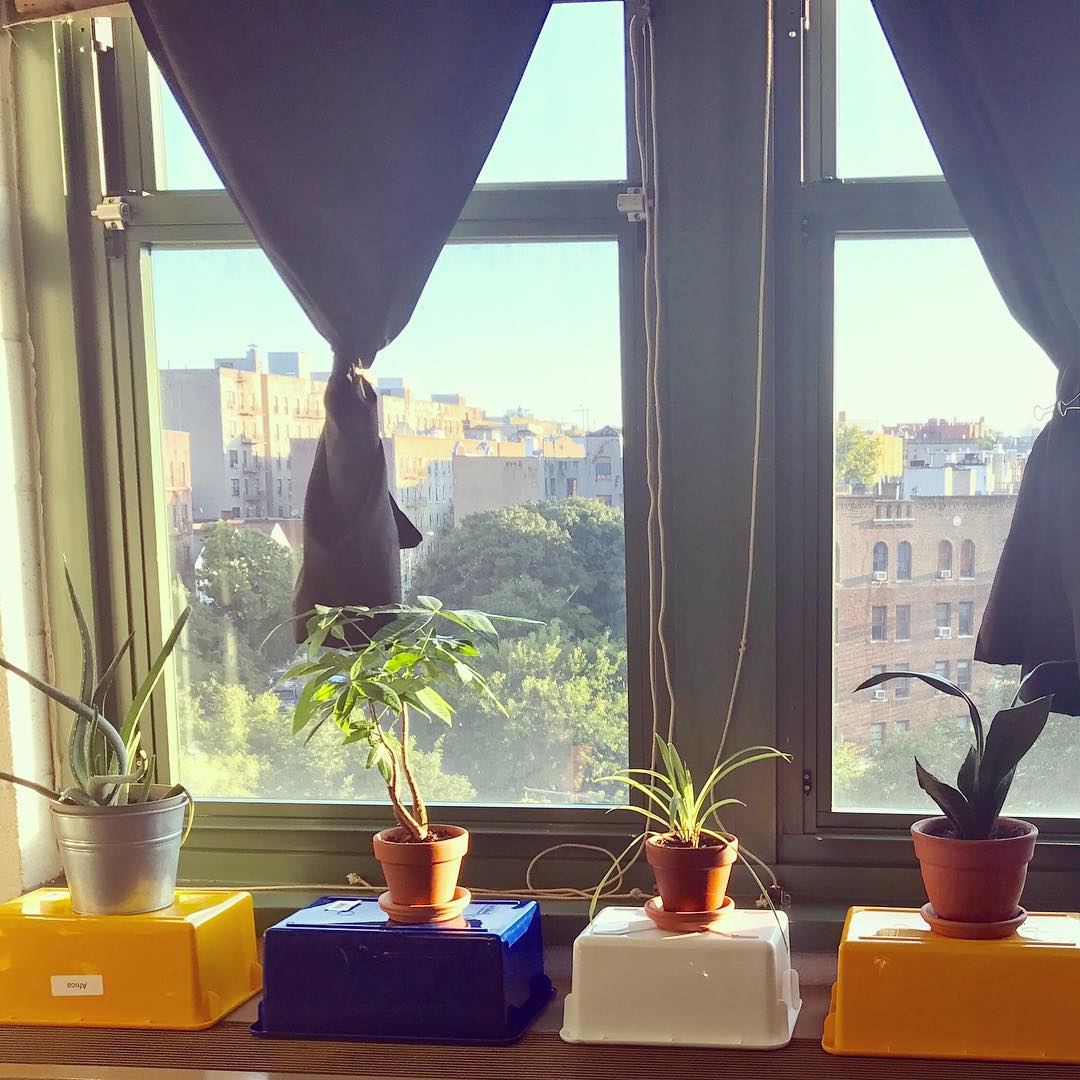
Photo courtesy of New York elementary teacher Marilyn
It turns out the simple act of looking at a plant triggers a positive response in our brain. So when students are feeling tired, stressed, or struggling to keep their attention on the task at hand, having plants around might just help them out in that moment!
Even NASA has explored the best and worst indoor plants for helping to improve air quality — on the off chance that we humans ever need to live in a “sealed” environment on another planet — and found there’s a lot of good to be found.
Best of all: You don’t have to be a master gardener to derive all those benefits from plants right in your elementary school classroom. If you’re not much of a green thumb but would like to keep a few classroom plants, look no further! With two main points of consideration being ease of care and allergy friendliness, our teacher team has compiled a list of the best and worst indoor plants for classrooms.
The Best Classroom Plants
1. Jade Plant
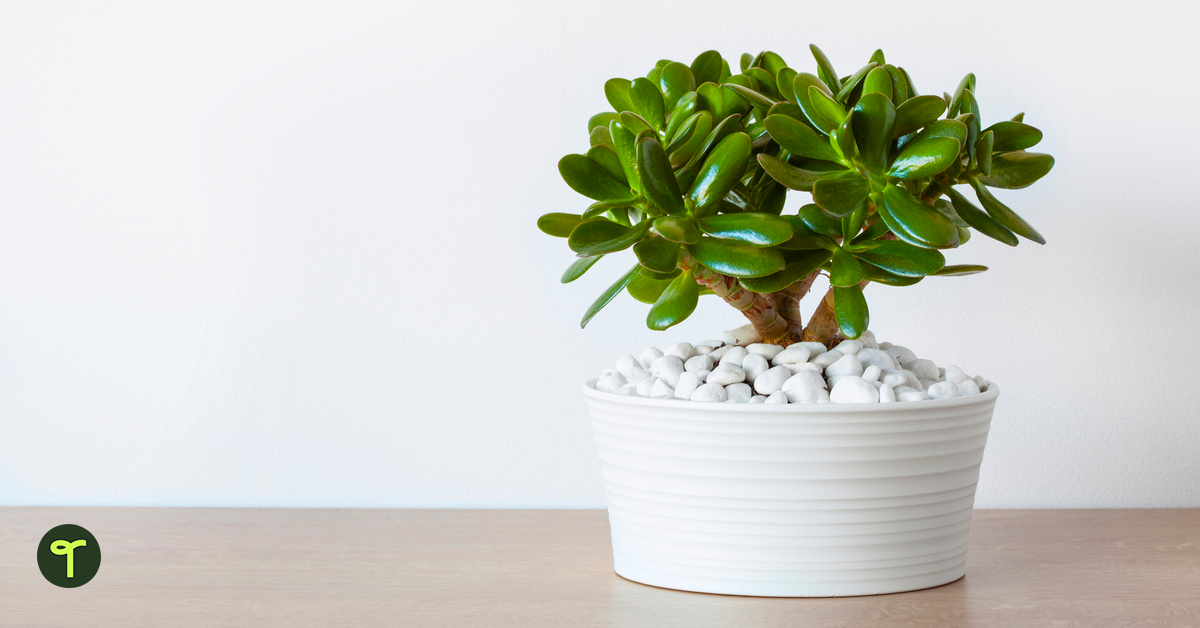
Shutterstock/Olga Miltsova
Not only are jade plants easy to take care of, but they are also known to be symbols of good luck! Just what you need in a classroom plant?
Considered a succulent, you certainly don’t want to let a jade plant dry out, but these classroom-friendly plants have a thick woody stem with rubbery leaves that hold onto water so you don’t have to worry if you forget to do it before you leave for a long weekend.
How to Care for a Jade Plant
-
- Plant in a pot that is a little wider than you think the plant needs. Jade tends to grow quite top-heavy, so will need the support of a bigger pot later on!
- Pot using a free-draining soil, or a cactus/succulent mix.
- Jade plants are best in a sunny spot! So keep this one by a bright window.
- Water when the top of the soil is dry to touch. But be careful not to over-water as jade plants do not like to be waterlogged.
- Fertilize once every 3 to 4 months with an all-purpose fertilizer.
- Wipe the leaves with a damp cloth every now and again to remove dust.
2. Spider Plant
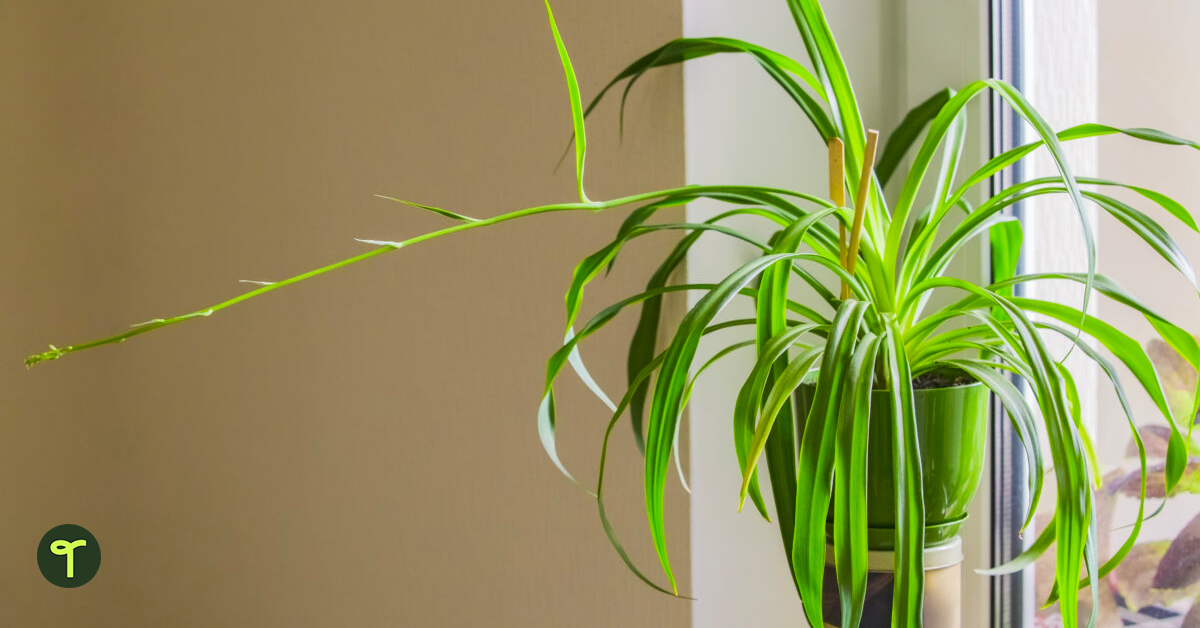
Shutterstock/Olga Prava
Spider plants have long, thin green and white leaves. They are a striking plant to have in a hanging basket or macrame plant hanger. Spider plants are so-named because of the long stems of “spiderettes” that grow from the “mother plant,” and they’re popular with teachers who can send spider “babies” home with their students at the end of the school year as an end-of-year gift.
How to Care for a Spider Plant
- Pot using a free-draining potting mix.
- Keep your spider plant in low to medium light.
- Water only when the soil is dry to touch, making sure not to waterlog the plant.
- Prune your spider plant once a year in spring or summer by cutting discolored and dead leaves or unwanted spiderettes at the very base of the plant.
- Repot only when the plant roots begin to show at the top of the pot.
3. “Janet Craig” Dracaena

Shutterstock/Pekka Nikonen
This is a specific variety of dracaena species that can grow up to 10 ft tall if not pruned, so beware that this classroom plant does require a bit of maintenance. That said, it makes a pretty floor plant to help disguise filing cabinets, ugly floor-to-ceiling pipes, or other less desirable classroom features!
How to Care for a Janet Craig Dracaena
- Yes, it’s a running theme in this post, but don’t over-water your new dracaena.
- Prune back if it gets too tall by simply cutting the cane at any point. The plant will sprout a new cluster of leaves.
- Move to a larger pot when the roots have filled the original one.
- Flush salts from the soil once a year by taking the plant out into a warm spot out of direct sunlight and slowly pouring lukewarm water over the soil.
- Wipe the leaves with a damp cloth to remove dust build-up — this could even be an easy classroom job for a helpful student.
4. Chinese Evergreen

A stunning plant with white and green leaves, Chinese Evergreens are another indoor plant touted as making a novice gardener look like an expert! Although it’s a tropical plant, it will enjoy warmer locations where the temperature doesn’t drop much below 60°F, which could work for a classroom, provided you don’t leave it over winter break if you’re in a state where it snows.
- Pot using free-draining soil.
- Place in a spot with low-medium filtered light.
- Water occasionally, allowing the soil to dry out a little between each watering.
- Prune off any flowers or dead leave by reaching into the plant and cutting as close to the bottom of the stem as possible.
5. Lucky Bamboo

Shutterstock/OKSANA FERKHOVA
Another species of dracaena, you can grow lucky bamboo in water or soil! Place a few stems of lucky bamboo in a tall glass vase to easily keep track of its watering needs, or place the bamboo in a pot and fill it with pebbles and water. Alternatively, plant your bamboo in well-draining soil.
How to Care for Lucky Bamboo in Water
- Keep your lucky bamboo out of direct sunlight.
- Make sure that the roots of the bamboo are always covered with water.
- As the stalks grow taller, move the bamboo into a taller pot or container to ensure you can still fill it past the roots.
- Prune any thin or crooked shoots 1-2 inches from the main stalk.
How to Care for Lucky Bamboo in Soil
- Keep your lucky bamboo in an area with low to medium light.
- Water regularly to ensure the soil is always moist to touch.
Plants to Avoid in the Classroom
So we’ve covered the best plants for the classroom, but which house plants should be left back at your house? It is best to avoid the following indoor plants as they can increase allergies such as hay fever and skin rashes.
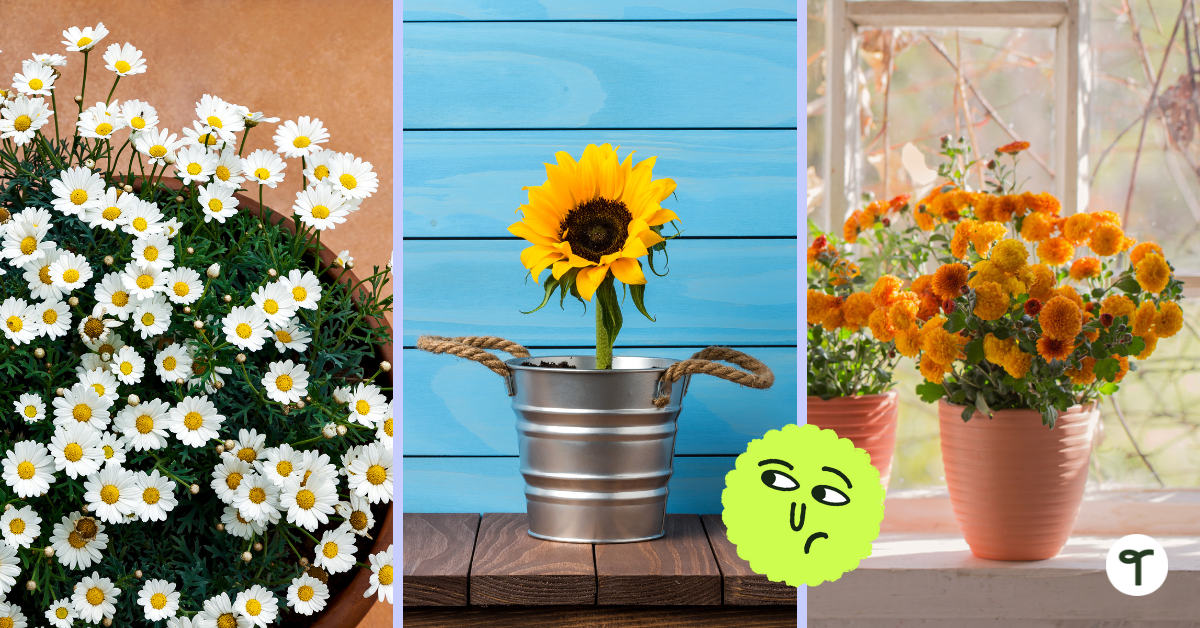
Flowering Plants with High Levels of Pollen
The following flowers or flowering plants have high levels of pollen and are known to make life terribly uncomfortable for sufferers of hayfever:
- Daisies
- Sunflowers
- Chamomile
- Queen Anne’s Lace
- African Violets
- Chrysanthemums
Plants That Cause Skin Irritations
Some common indoor plants might not be suitable for the classroom as they can cause rashes or other irritations to people with sensitive skin. Avoid plants such as
- Ferns
- Orchids
- Bonsai
- English Ivy
- Algerian Ivy
- Weeping Figs
- Yukkas
Plants That Are Poisonous/Toxic When Ingested
While this sounds like a no-brainer, it is surprising just how many plants can cause illness if ingested … and we all have had that student who just HAD to put things in their mouth, haven’t we? The Zanzibar Gem is a popular indoor plant that is touted to “thrive on neglect,” however, the sap from this plant is toxic, which makes it one that might not be worth the risk in your classroom.
Here are a few common houseplants that can be toxic to humans when ingested:
- Peace Lily & Easter Lily
- Snake Plants (a.k.a. Mother-in-Law’s Tongue)
- Dumb Cane
- Philodendron
Plant Tips for Teachers
Plants in the classroom can be a lot of effort if the teacher is solely responsible for their care. Encourage your students to be responsible for caring for the classroom’s plants! Educate your children on how the particular plants you have should be cared for and what they can do to help them thrive. You can even add plant care to this Classroom Jobs Bulletin Board Display pack:
Here are a few more important tips from our teacher team to make the most of your classroom plants!
- Make sure your pots have drainage holes at the bottom and they are placed on a saucer. Pots that don’t have holes to drain will usually cause root rot which leads to pesky gnats.
- Adding googly eyes to your pots is a fun (and funny!) touch kids will love, and it’s inexpensive!
- If you have a school garden, consider starting seeds in your classroom during the colder months to teach kids about the germination process … then take them outside to plant when the weather is warm! Check out our cute Classroom Garden posters!
- Keeping plants can be a great part of continuing your class conversation about sustainability and the environment. Use your class plants to explore life cycles, learn about why living things need water, and practice “plants in action” vocabulary every day. You can also try incorporating some of these lesson ideas:
- Measurement of plant growth and leaf size
- Still life drawing of plants and leaves
- Hands-on learning areas of different environments/landscapes
- Narrative writing prompt using a unique-looking plant
Explore dozens of teacher-created resources ready to use in the classroom in your lessons about plants and other flora!
Banner image via shutterstock/mae lans


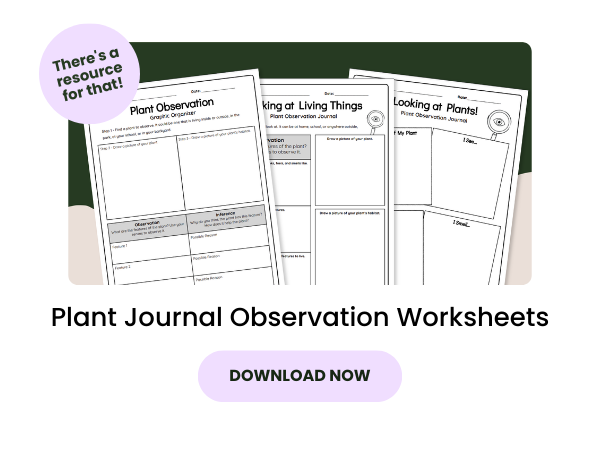

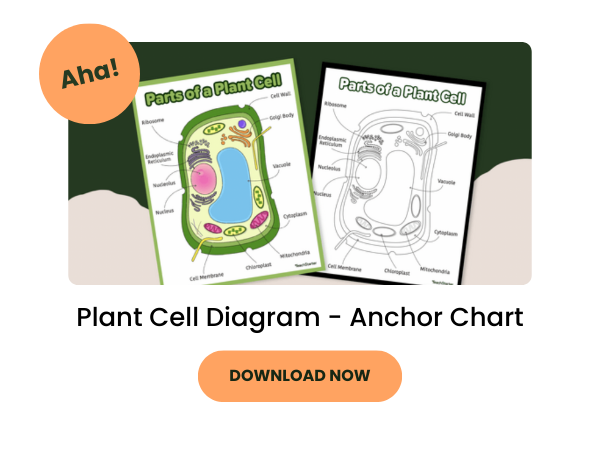







Comments